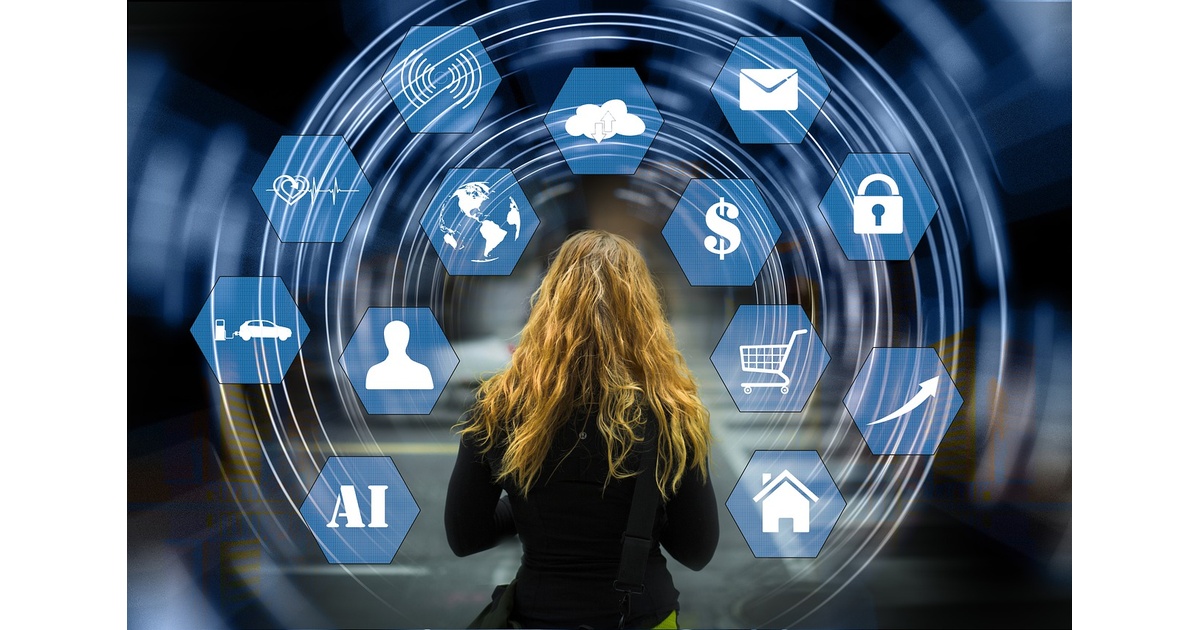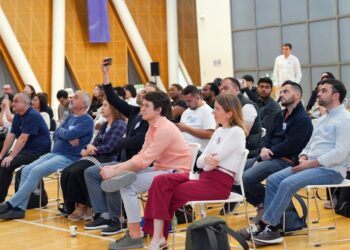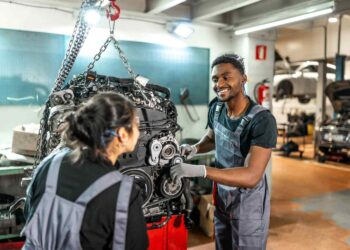AI tools can assist in finding and recruiting influencers for campaigns, tracking performance and ROI tracking as well as detecting any possible fraudsters or reducing risks of fraud.
AI can be utilized to craft content that is engaging and tailored specifically for each influencer, helping brands increase engagement rates and establish brand loyalty.
AI-generated content
Brands can use AI-generated content to save time, personalize their message, ensure consistency, and scale their influencer marketing campaigns. AI tools like Upfluence also assist brands in monitoring campaign ROI in real time and identifying any areas for improvement, helping them make data-driven decisions to increase audience engagement and drive better results.
One of the greatest challenges of influencer marketing is finding suitable influencers to partner with. This process can be time-consuming and even when all public numbers seem convincing there remains the risk of fraud (fake followers or content authenticity issues). AI can assist influencer marketers by analyzing followers’ growth rates, engagement rates, and sentiment analysis in posts to find ideal matches; furthermore, it automates research processes by scanning large volumes of public data in real-time for insights that provide timely insights.
Influencers face the difficulty of producing original, engaging content that resonates with their audiences, which can be challenging. Generative AI provides creative ideas and content for influencers to incorporate into their campaigns that may increase engagement rates; however, AI should never replace human creativity or intuition for influencer content creation – as doing so would dilute genuine connections made between influencers and their audiences. Brands must disclose when using AI technology for any campaigns to comply with platform requirements and foster trust with their audiences.
AI-generated influencers
AI in influencer marketing provides many advantages, including its ability to personalize content, maintain consistency, and scale effortlessly. However, human oversight should still be present to ensure all influencer-generated material meets brand guidelines and addresses the needs of target audiences.
AI tools can assist influencers with saving both time and effort by automating repetitive tasks like data analysis, search, and outreach. AI can also assist them in connecting more efficiently with potential partners making them an indispensable tool for busy influencers.
Generative AI can create content and graphics for social media posts, landing pages, and other materials quickly and efficiently – saving influencers a tremendous amount of time while helping them craft more engaging posts and even producing an email pitch! It even can write convincing pitch emails for them!
Virtual influencers (or “generative AI”) are the latest AI advancement in influencer marketing. One notable generative AI influencer is Lil Miquela, who has collaborated with multiple fashion brands such as Calvin Klein and Prada and modeled for Bella Hadid. She travels around the world enjoying native cuisines and activities before sharing them via digital channels such as social media.
Finding suitable influencers to work with can be one of the greatest challenges of influencer marketing, taking time and energy to identify fraud or any mismatch between their personality and brand image. AI can assist marketers by helping them make smarter choices by analyzing an influencer’s profile in depth; including looking out for signs of possible fraud such as sudden massive increases in followers that might have been purchased.
AI-generated campaigns
Utilizing AI tools for influencer marketing campaigns can help brands maximize efficiency and enhance the overall effectiveness of their efforts. By automating tasks such as data analysis and content creation, marketers can focus on developing creative strategies and nurturing relationships with their audiences instead.
AI-powered tools can make finding influencers for campaigns easier than ever, saving marketers both time and effort when searching for potential collaborators. Such tools can identify potential influencers based on audience size and engagement rate; then filter out those that do not match up with a brand’s target demographics – saving marketers much trial-and-error when searching for suitable influencers to collaborate with.
AI’s main limitation lies in its capacity to produce content that is misleading or falsified, making it essential to monitor social media for fraudulent followers and engagement rates; even major brands can fall prey to this problem. A good AI tool should be able to detect these trends and prevent fraudulent content from reaching your audience.
Avoid this situation with Klear, an AI-powered platform that uses AI to identify influencers and audience demographics for your campaign. Klear can identify and analyze audience data across social platforms including Instagram, Twitter, YouTube, TikTok, and Twitch; additionally, it creates detailed briefs that allow influencers to deliver high-quality engaging content.
AI-generated analytics
Employing AI-generated analytics to monitor influencer campaign performance is an integral component of maximizing return on investment (ROI). AI tools can assist brands with this endeavor by helping identify non-aligning influencers, detect fraud, and analyze content quality, engagement rates, audience demographics, and sentiment analysis – not to mention creating and managing campaigns with ease.
AI-generated analytics can also be used to optimize existing content. AI can provide suggestions for captions and image aesthetics optimization as well as topics based on your target audience’s interests, saving both time and resources for your team while helping generate creative ideas for upcoming campaigns. AI analytics can also be used to measure influencer marketing success through measuring engagement rates, traffic flow, and sales conversion rates to make informed decisions regarding potential influencer partnerships for the future.
Virtual influencers are becoming more and more popular, offering brands three times higher engagement rates than human influencers. But virtual influencers also come with their own set of issues – most importantly lacking authenticity as AI-generated content does not contain stories from real life that ring true with audiences.
One way to reduce these worries is to establish the goals for your influencer campaign before integrating AI; this will enable you to select appropriate AI tools and strategies to reach those objectives.







